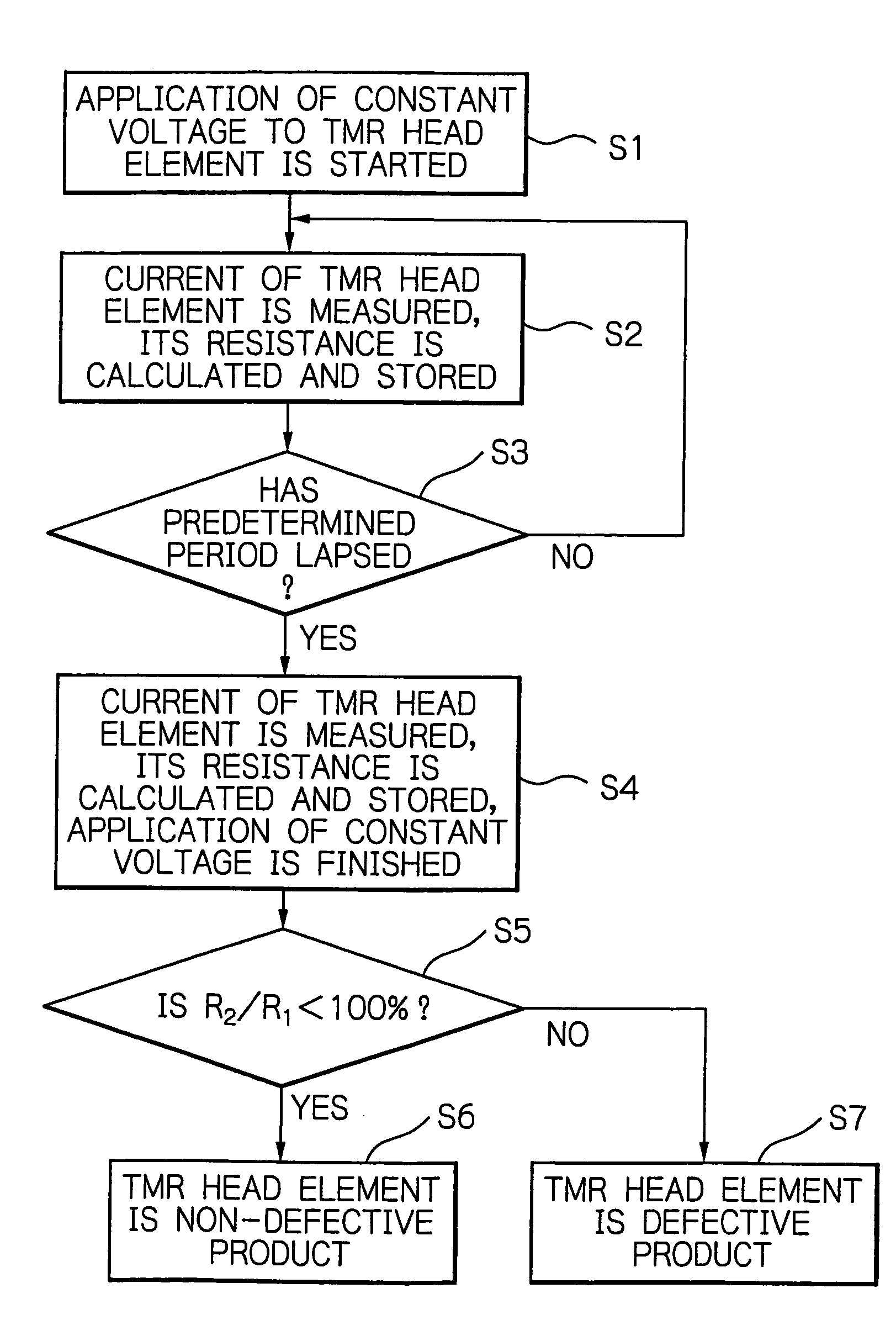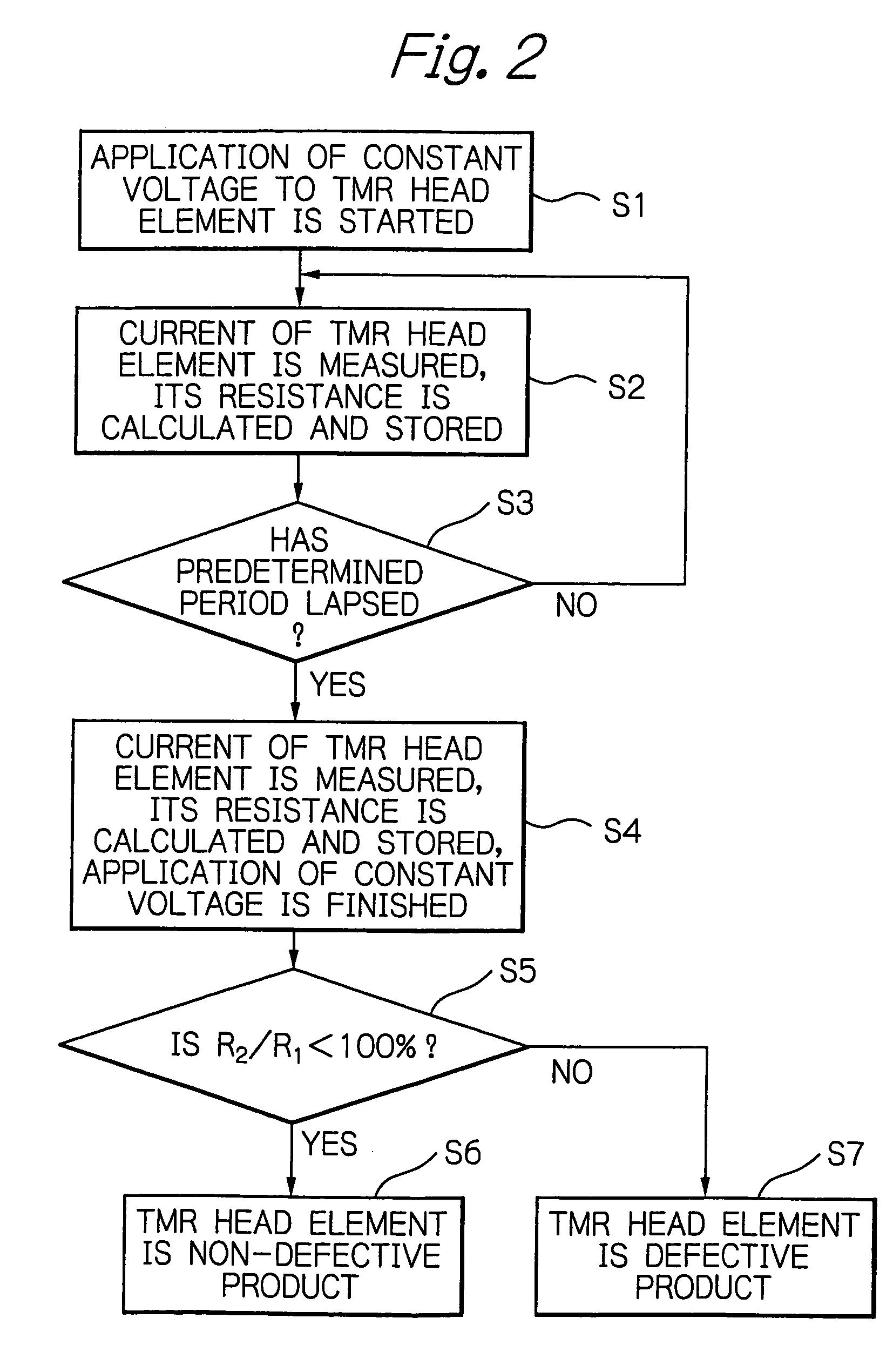Method and apparatus for testing tunnel magnetoresistive effect element
a tunnel magnetoresistive and element technology, applied in the field of tunnel magnetoresistive effect element testing, can solve the problems of not being generated, adversely affecting the bias magnetic field of the mr head element, and it is difficult to detect the burst noise rtn with reliability, so as to achieve the effect of extremely easy confirmation of stability and reliability of the tmr elemen
- Summary
- Abstract
- Description
- Claims
- Application Information
AI Technical Summary
Benefits of technology
Problems solved by technology
Method used
Image
Examples
Embodiment Construction
[0036]FIG. 1 schematically illustrates a configuration of testing a TMR head element as a preferred embodiment according to the present invention.
[0037]In the figure, reference numeral 10 denotes a bar member or bar block with a plurality of aligned TMR heads that are not individually separated yet, and 11 denotes a testing apparatus of the TMR head element.
[0038]The bar member 10 is provided by forming a large number of TMR heads arranged in matrix on a wafer according to thin-film technology, by cutting the wafer into bar shaped members so that each member has the aligned magnetic heads, and by lapping the ABS of the head member 10 so as to adjust gap-depth (MR height) of the heads. Each TMR head 10a of the bar member 10 is provided with a TMR read head element, an inductive write head element, a pair of terminal pads 10b electrically connected to the TMR read head element, and a pair of terminal pads 10c electrically connected to the inductive write head element.
[0039]The testing...
PUM
| Property | Measurement | Unit |
|---|---|---|
| constant voltage | aaaaa | aaaaa |
| time | aaaaa | aaaaa |
| breakdown voltage | aaaaa | aaaaa |
Abstract
Description
Claims
Application Information
 Login to View More
Login to View More - R&D
- Intellectual Property
- Life Sciences
- Materials
- Tech Scout
- Unparalleled Data Quality
- Higher Quality Content
- 60% Fewer Hallucinations
Browse by: Latest US Patents, China's latest patents, Technical Efficacy Thesaurus, Application Domain, Technology Topic, Popular Technical Reports.
© 2025 PatSnap. All rights reserved.Legal|Privacy policy|Modern Slavery Act Transparency Statement|Sitemap|About US| Contact US: help@patsnap.com



